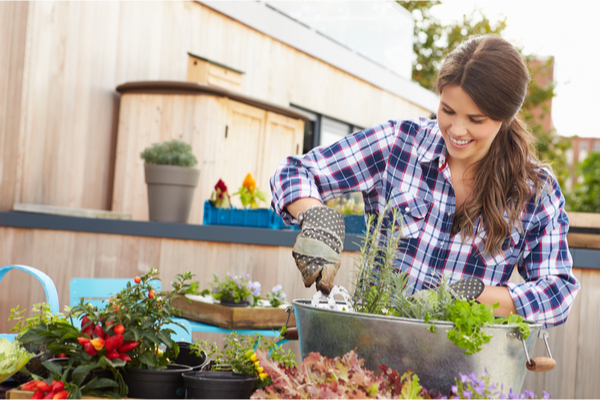Do you lack a green thumb but desire a beautiful backyard with plants? Staying at home to prevent the novel coronavirus from spreading doesn’t have to mean staying indoors. Growing flowers in pots is a satisfying way to brighten up your porch or yard, and it’s an easy way to get started with gardening.
Here’s everything you need to know to grow your own Container Garden, courtesy Today’s Homeowner:
- Cover your drainage holes (if they are large enough that soil would wash out), then fill the pot about two-thirds full of potting mix.
- Set the plants in the container and decide on your arrangement. You can do a round design (tallest plants in the center and shorter or trailing plants around the edges), or a front-facing design (tall plants in back and shorter ones in front).
- Gently remove your plants from their store-bought pots. If the plant is stuck, squeeze the pot a little to help push it out — never yank on the stem.
- Disturb the roots as little as possible, but if they are a hard-packed ball you can loosen them a little with your fingers.
- Nestle the plants in the soil, keeping an eye on the depth to make sure they will be planted at the same level they were in their original pot.
- Add soil between the plants, firming it gently with your fingers. Don’t press hard enough to break the plants.
- Make sure everything is at the same level with no roots showing.
- Move your container to its chosen spot, and water the plant thoroughly until water runs out the bottom.
- Now, step back and admire your handiwork!
Easy Container Care:
- Water your container every two to three days. In the heat of summer, you may need to water it every day.
- If you want to feed your plants, use an all-purpose or bloom-boosting plant food every couple of weeks according to package instructions.
- As you water, remove spent blooms to encourage more blooming — a practice called deadheading. Don’t just pull off the dead petals — actually pinch off the little stem beneath the flower.
- If your plants are looking spindly, pinch off the tips of the stems to stimulate them to produce more branches.
—
Photo Credit: Monkey Business Images / Shutterstock.com
